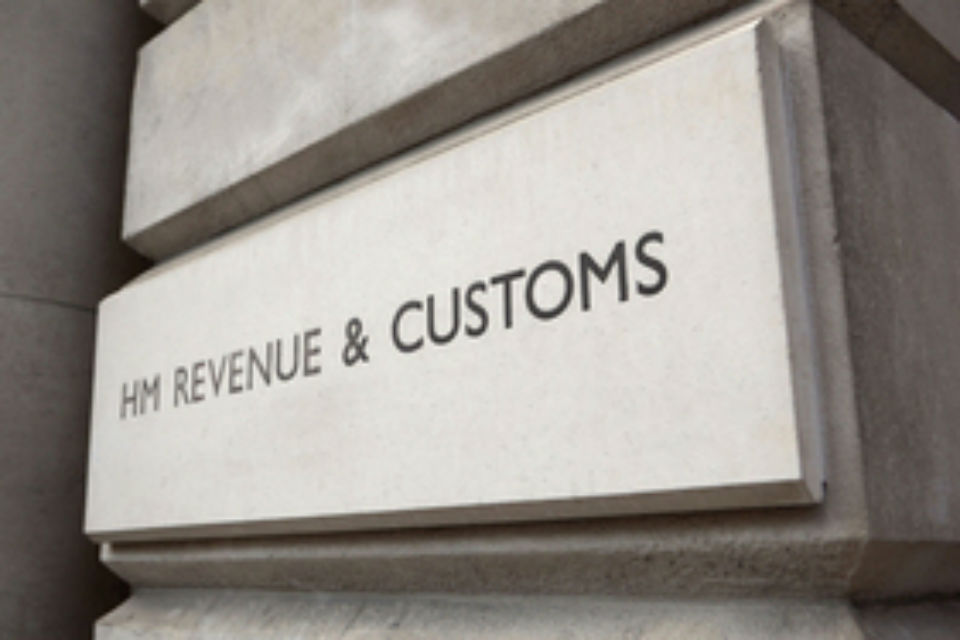Some 42.6% of all gov.uk domains are now owned by the lowest rung of government. PublicTechnology examines the data to find out what else is new – and what has disappeared from view – in a busy year of comings and goings for government websites
Local councils that have launched new gov.uk sites in the last year
Acaster MalbisAiskew and Leeming Bar Parish Council
Amotherby Parish Council
Appleton Roebuck and Acaster Selby Parish Council
Ashbourne Town Council
Aspatria Town Council
Barnoldswick Town Council
Bewerley Parish Council
Biddenham Parish Council
Bilbrook Parish Council
Birchington-on-Sea Parish Council
Bletchley and Fenny Stratford Town Council
Bridgwater Without Parish Council
Brinkworth Parish Council
Central Swindon North Parish Council
Chelsham and Farleigh Parish Council
Chiseldon Parish Council
Claybrooke Magna Parish Council
Clophill Parish Council
Cold Higham Parish Council
Cricklade Town Council
Denham Parish Council
Dummer Parish Council
Ellesmere Rural Parish Council
Exminster Parish Council
Exning Parish Council
Georgeham Parish Council
Hackleton Parish Council
Hardingstone Parish Council
Hawkinge Town Council
High Halstow Parish Council
Holbeton Parish Council
Hound Parish Council
Hunstanton Town Council
Hythe Town Council
Itchen Stoke and Ovington Parish Council
Kettlewell with Starbotton Parish Council
Kingswear Parish Council
Little Hadham Parish Council
Littlemore Parish Council
Little Somerford Parish Council
Long Melford Parish Council
Lowestoft Town Council
Luddesdown Parish Council
Lutton Parish Council
Lydiard Millicent Parish Council
Marden Parish Council
Measham Parish Council
Milton (Abingdon) Parish Council
Milton Under Wychwood Parish Council
Minchinhampton Parish Council
Minterne Magna Parish Council
Moreton Valence Parish Council
Moss & District Parish Council
North Kilworth Parish Council
Eldene, Liden, and Nythe Parish Council
Offord Cluny and Offord Darcy Parish Council
Okeford Fitzpaine Parish Council
Orgreave Parish Council
Oulton Broad Parish Council
Pancrasweek Parish Council
Peachehaven Town Council
Perranzabuloe Parish Council
Quarndon Parish Council
Queenthorne Parish Council
Quethiock Parish Council
Ringmer Parish Council
Ringmore Parish Council
Sampford Courtenay Parish Council
Sheet Parish Council
South Normanton Parish Council
South Swindon Parish Council
St Agnes Parish Council
Stansted Parish Council
St Donat’s Community Council
Steeple Claydon Parish Council
Stock Parish Council
Stourport Parish Council
St Teath Parish Council
Sturminster Marshall
Tollerton Parish Council
Towyn and Kinmel Bay Town Council
Westbury Sub Mendip Parish Council
Westcott Parish Council
Westgate-on-Sea Town Council
Weston by Welland Parish Council
Weston-on-the-Green Parish Council
West Swindon Parish Council
Woolley Parish Council
Yealmpton Parish Council
Yeovilton Parish Council
In terms of its application across government, the concept of ‘digital transformation’ is more likely to conjure up images of Whitehall’s grand façades and corridors of power – rather than the chilly village halls and plastic stacking chairs that might be found at a typical parish council meeting.
But recently published data indicates that even the lowest levels of government in the UK are embracing digital means of interacting with the citizens they serve.
Recently published government figures reveal that, during the year preceding 26 October 2017, the number of registered gov.uk website domains declined by 66 to a total of 2,938. This marks the first time the overall figure has fallen below 3,000, having fallen gradually from a high of 3,771 in 2011.
But, despite the top-line reduction, there was one area that saw a marked uptick in the use of gov.uk domains. Of the 143 new government website addresses registered between October 2016 and October 2017, the vast majority belong to parish or town councils. Some may have had existing .org, .co.uk, or .com domains. Others are getting online for the first time.
A total of 91 parish, town, or community councils (listed right) have already launched new websites built using gov.uk platforms and design tools. More have registered domains and are currently constructing sites to launch in the coming weeks and months.
And other rungs of government – even, as you will discover, the very highest rung of them all – were among the 352 entities that, in the last year, have retired a gov.uk domain or registered a new one. This represents more than one in nine of the 3,004 domains that were on the UK government’s domain register as of October 2016.
The parish, town, and community councils to have launched a new gov.uk website over the last 12 months span the length and breadth of England and Wales – from Cumbria to Cornwall, and from Ashbourne to Yeovilton. (Sadly, for the purposes of this article, Zennor Parish Council already had a gov.uk website.)
Wiltshire led the way last year, with nine councils from the lowest level of government creating gov.uk sites. Eight new sites were launched by parish or town councils in both Devon and Kent, six arose in North Yorkshire, and four apiece in Buckinghamshire, Cornwall, Dorset, Hampshire, Northamptonshire, Oxfordshire, and Suffolk.
Some bodies with new websites, such as Central Swindon North Parish Council, or Lowestoft Town Council, serve tens of thousands of citizens living in built-up urban areas. Most cover just one or two verdant villages.
Whoever their constituents, and however many there are, local councils should move to gov.uk domains to ensure their websites are as functional and secure as possible, according the Cabinet Office.
Total number of gov.uk domains
3,771 in 2011
3,683 in 2012
3,631 in 2013
3,556 in 2014
3,528 in 2015
3,004 in 2016
2,938 in 2017
Source: GDS
A spokesperson says: “By moving to a gov.uk domain, local authorities are letting users know that their website meets high standards, and can be trusted. Gov.uk is a world-leading platform, with a strong reputation and robust safeguards around perceived issues such as phishing, hacking, and scamming, which provides reassurance for both the local authority and user alike.”
The number of gov.uk domains owned by town and community councils has remained fairly steady over the last few years. But the volume of parish councils – which are typically the smallest of all local-government bodies – has increased steadily over the last half decade, particularly in the last two years. In 2015 there 566 parish council-owned government websites. This figure increased by over 100 to 668 the following, and by another 90 in 2017.
Websites owned by parish, town, or community councils now account for 42.6% of all gov.uk domains, up from less than 25% in 2013.
Slightly higher up the food chain, another strand of local government that has had to create a new online home in the last 12 months are the city regions created by the metro-mayor elections last summer. Two of these – the combined authorities of the West of England, and Cambridgeshire and Peterborough – have registered new domains and built sites from scratch in the last 12 months.
A prime piece of online real estate?
One of the more eye-catching registrations during the last year was the new domain ‘no10.gov.uk’. The domain name – which has only become active in the last few days – just offers another way of navigating to the website of the Prime Minister’s Office, for those who do not want to waste precious seconds on typing out the extra four characters of ‘number10.gov.uk’.
The Department for Work and Pensions is another central government entity to have added to its footprint on the web in the last year. The DWP created ‘yourpension.gov.uk’, a new online resource for providing information on the state pension. The department has also registered the – presumably self-explanatorily named – ‘understandinguniversalcredit.gov.uk’, although no site is yet live at the address.
The newly created office of Small Business Commissioner – to which Paul Uppal was appointed last month – has been swift to register its own domain, with a website presumably to follow in due course.
The Independent Office for Police Conduct is another new public body to have been quick off the mark in registering its gov.uk domain, ahead of the organisation’s launch in January 2018.
Percentage of gov.uk domains owned by parish, town, or community councils
42.6% in 2017
Total of 1,253 domains
38.5% in 2016
Total of 1,156 domains
29.3% in 2015
Total of 1,034 domains
27.2% in 2014
Total of 967 domains
24.9% in 2013
Total of 903 domains
Source: GDS
The government’s Year of Engineering programme set to last through 2018 has its own gov.uk domain, which currently redirects to the Department for Transport website.
Homes England – which will shortly become the new name for the Homes and Communities Agency – has also secured its own domain.
The HM Prison and Probation Service – which has been operating under its current moniker since earlier this year – is already up and running with its new gov.uk site.
The THINK! Road safety campaign moved to the think.gov.uk website earlier this year. Another snappily named domain registered in the last 12 months is great.gov.uk – a digital service launched in November 2016 aimed at helping UK business sell goods and services overseas.
The Plan for Britain, which was unveiled in January, is another recent government scheme to have launched amid great fanfare. The scheme now its own online home on at planforbritain.gov.uk.
Dot gone
A 2015 reorganisation saw a number of local authorities merge or otherwise change shape, and ‘ballymena.gov.uk’ and ‘derrycity.gov.uk’ were among the domains to be retired in the last year as a result.
The Human Tissue Authority significantly reduced the possibility of its visitors making spelling errors by ditching ‘humantissueauthority.gov.uk’ to rely solely on ‘hta.gov.uk’.
Newcastle upon Tyne City Council undertook a similar move, retaining the succinct ‘newcastle.gov.uk’ while losing the more unwieldy ‘newcastle-city-council.gov.uk’.
It is not entirely clear what was the ambition behind the registration of the ‘norfolkambition.gov.uk’ domain. But, given that the domain, which was owned by Norfolk County Council, has now been retired, we can assume it has either been achieved or abandoned at some point in the last year.
The domains ‘staffordshireconnects.gov.uk’ and ‘staffordshire-connects.gov.uk’, which were previously used to house Staffordshire County Council’s e-Government Partnership Portal, are also both connecting no more.
And, almost 18 years after the turn of the century, and 11 since it was formally wound up, the Millennium Commission, which was set up to help the country celebrate the year 2000, finally closed down its ‘millennium.gov.uk’ domain.



